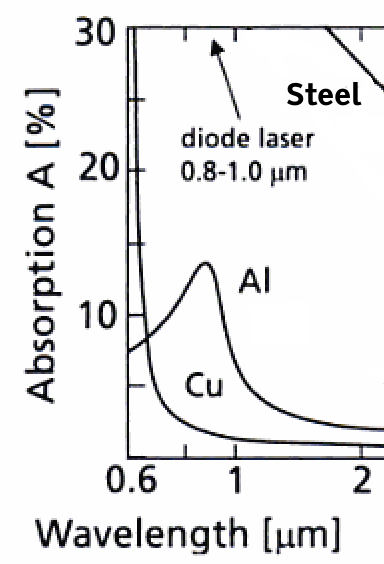|
Size: 2475
Comment:
|
Size: 2476
Comment:
|
| Deletions are marked like this. | Additions are marked like this. |
| Line 1: | Line 1: |
| #format jsmat | #format jsmath |
Making Ballast from Rocket Tanks with Lasers
Space debris may be an opportunity, not a problem. Rocket tanks may be cut into gram-sized weights with lasers, then added to ultra-thinsats to stabilize their orbits against light pressure. Perhaps, with some technological advances, we can learn to build solid state lasers that don't need optics, and mount them on thinsats. A 100 milliwatt (average) pulsed laser will not cut metal very fast, but in time it will cut it.
Rocket upper stage tanks have a thickness from 1 to 5 mm (Need Reference) and are typically aluminum alloy. Aluminum has an absorption peak of 14% around 900nm (LOOSEN1998). If we assume a 1cm2 aperture emitter and a 1 meter distance, we can make a 10&um;m spot, maybe, given a magic phase-coherent focusing laser.
Loosen's equation 2 offers Treusch's formula for beam-center intensity:
I_v \propto { { T_v \kappa } \over { Abs w_F arctan left( { 8 \kappa t_L } \over { w_f^2 } right)^2
|| || Aluminum ||
I_v |
|
Threshold Intensity |
T_v |
3000K |
Vaporization Temperature |
w_f |
10μm |
spot radius |
Abs |
0.14 |
Absorptioncoefficient |
\kappa |
1e-4 m2/s |
Thermal diffusivity, \kappa = \lambda_th / \rho c_h |
\lambda_th |
240 W/m-K |
Thermal conductivity |
\rho |
2700 kg/m3 |
Density |
c_h |
900 J / kg-K |
Heat capacity |
For a 1&um;s pulse, a 10&um;m kerf, and a 10 watt pulse (10MW/cm2),
(LOOSEN1998) Peter Loosen, Lasers in Materials Processing, figure 6 on page 291 in ''Advances in Lasers and Applications'' 1998. |

